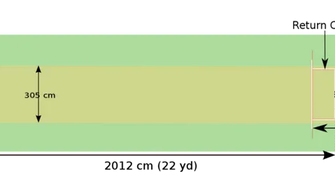What is mankading in cricket
Cricket is a sport filled with complex rules and intricate strategies. One such aspect of cricket that has gained much discussion and debate over the years is “mankading”. This term refers to a specific method of running out a non-striking batsman when he leaves his crease before the bowler has released the ball.
Understanding Mankading
The act of ‘Mankading’ is named after Vinoo Mankad, an Indian cricketer who famously ran out an Australian player during a Test match in 1947 using this method. To ‘Mankad’, a bowler, during his run-up for delivery, must break the wicket at the non-striker’s end before releasing the ball if the non-striking batsman is outside his popping (batting) crease.
It’s important to clarify here that according to ICC’s laws of cricket (law 41.16), it’s not illegal or against the spirit of cricket for a bowler to run out a non-striker in this way. If executed correctly, mankading can serve as a vital tactic to dismiss an opposing player.
Mankading: Controversial or Fair Play?
Despite its legality, mankading often stirs up controversy within cricketing circles because it challenges common perceptions about sportsmanship and fair play — principles highly valued within the game. Critics argue that it does not give non-strikers enough warning and opportunities for correction as other regulation infringements do. Some believe that it goes against the philosophy of cricket being a gentleman’s game.
On the other hand, supporters of mankading assert that players should always be held accountable for their actions onfield; thus non-strikers knowingly stepping out of their crease prematurely must face consequences just like any other rule-violating action.
Evolving Perspectives on Mankading
The approach towards mankading has evolved over the years with various incidents over a period of time shaping it. While there are players who have publicly stated their reluctance to use this tactic, others have embraced it as just another aspect of the game mechanics.
Full Video in Youtube
Recent Developments and Official Stance
Recently, in 2019, an incident during an IPL match brought this controversial run-out method back into scrutiny. Kings XI Punjab’s Ravi Ashwin dismissed Jos Buttler from Rajasthan Royals through mankading — sparking debate whether or not such dismissal was within the spirit of the game.
Notably, the ICC’s official stance maintains that mankading is perfectly admissible by its laws. In fact, warnings before attempting a ‘Mankad’ from umpires were actually removed from the rulebooks in 2017, suggesting that it should be treated on par with other types of dismissals.
Mankading: A Tactic for Strategy or Discourtesy?
While controversy continues to simmer surrounding mankading, it can’t be denied that awareness about such tactics gives cricket its strategic depth. Teams consider all available options to outwit opponents while adhering to rules — and mankading falls somewhere along those lines.
However, in spite of compelling arguments on both sides regarding fairness of mankading, perhaps the sport could benefit from further clarification on how and when this idea can be employed without eliciting negativity.
The Future of Mankading
Looking forward, one thing is clear – until changes are made in cricket regulations concerning mankading or unless a more widespread acceptance emerges among cricketers globally regarding its use; debates will continue to rage every time someone uses this divisive tactic. But at the heart of it all is keeping up the gentleman’s spirit; if managed properly and respectfully — as part of the game tactics rather than signature move to consistently ‘catch’ non-strikers — mankading can merely add another layer to cricket’s rich tactical palette.
What matters most is remembering that, while winning is indeed important in a game, preserving respect for sportsmanship and opposing players should never be forgotten. After all, those pillars define what cricket really stands for.







